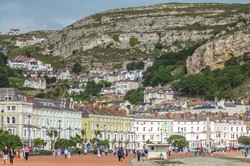What was her intellectual legacy? She believed that an account of a person without an account their beliefs is stunted, and devoid of the most interesting part of their life. She was a woman with a rich and vibrant intellectual life, so while an account of her thought is necessary, a full account is beyond the scope of this article.
She left a rich body of writing, but I consider her mysticism very significant. Regarding beauty as the gateway to God, the smile on the face of Christ, is very significant, as it challenges the cold materialist and reductionist philosophy promulgated by the Enlightenment in the eighteenth century and still powerful today. Yes, she is saying,the world has a gateway to knowledge of God. The true, the good and the beautiful are parts of this gateway.and perhaps more than other thinkers she saw and expressed the significance of the beautiful, which is the doorway to the divine.
But she also made a contribution to the Philosophy of Religion, with a cogent account of a Christian response to the problem of what God allows evil. It is thus. As God is an infinite being no other beings can exist where God is, so to create a world God must withdraw somewhat to create a space where the created world can be, an act of kenosis, Greek for emptying. This World must be imperfect, and so evil,which is a product of imperfections, can find a space. Evil is not willed by God, but the possibility of it is an unavoidable product of creation.
She uses the metaphor of a wall. It forms a barrier to communication, but persons on each side can tap out messages. This is so with creation, it is a barrier between humans and God, but human artifice can produce ways of directing the human mind, however inadequate they may be, to cross the barrier. In addition God himself has crossed the abyss between himself and humans by the incarnation, becoming man in Christ Jesus, showing us what God is and humans should be.
Ever political, during her brief period in Britain she produced some writings which tried to sketch out a political future for France after the horrors of Naziism had been defeated. It was a France where social justice thrived, but she did not live to see it.
I am an Amazon associate and earn money from qualifying purchases on this page.







 Pilgrimage. A review18 days ago
Pilgrimage. A review18 days ago
 Leo the Fourteenthon 05/09/2025
Leo the Fourteenthon 05/09/2025
 The Melsonby Hoardon 03/25/2025
The Melsonby Hoardon 03/25/2025



Comments
It is very likely that the two women met, but they did not share the same social circle.
The fourth paragraph to the first subheading, Life and death, considers that "Having qualified in Philosophy at a Grande Ecole, where she came first in her exam, narrowly beating Simone De Beauvoir, she went to teach in Lyons."
Is it known whether Simone de Beauvoir and Simone Weil ever met?
I do not thInk that anyone has sufficient information to answer this question.
The second paragraph to the first subheading, Life and death, considers that Simone Weil dominated classical Greek before age 12.
The first paragraph to the third subheading, Religion, finds her self-educating herself in Sanskrit. The latter achievement gives her access to the original Upanishads revered by Hinduism.
The first subheading indicates the self-instruction as introducing her to "ancient Greek literature."
Is it known whether she intended to inform herself of a particular piece or particular pieces -- such as epics or plays -- of that ancient literature?
She lived to learn. What happened to books she possessed is unclear.
It's impressive the number of books that Simone Weil accessed in her quest for knowledge.
Is it known whether she purchased books or whether she read them in libraries?
Might she have had quite a book collection? In which case, what would have happened to them with all her journeys and sickness and death?
I do not know, but I think that Simone changed her surname to Veil, so the two were probably unrelated. But Veil is pronounced Weil
The second paragraph in your first subheading, Life and death, intrigues me.
The Simone Weil about whom you write and the Simone Veil of the European Parliament presidency both instill in me respect for how they led their lives personally and professionally.
Perhaps I never mulled whether or not they closely were related because of the different spellings. But now, what with your wizzley, I pose the question to you: Were they collaterally or directly related?
I had never heard of her so this should be an interesting read ! Ty . xx
I do not know the reason that she was called Adolphine. It may be due to a desire to name a child after a beloved relative. This practice is very common, for example my middle name is Cyril,after my father.
I think that during wartime people had to be less particular .about burial sites, so they were more likely to be buried near to where they died.
That a member of the royal family unveiled the plaque speaks of Simone's importance?